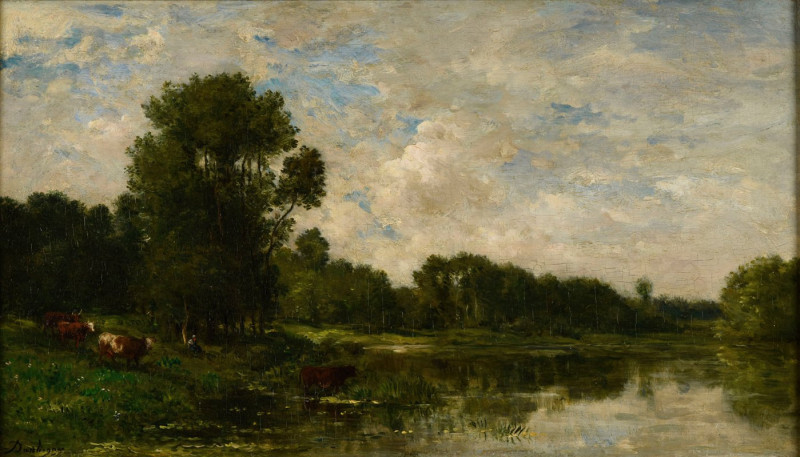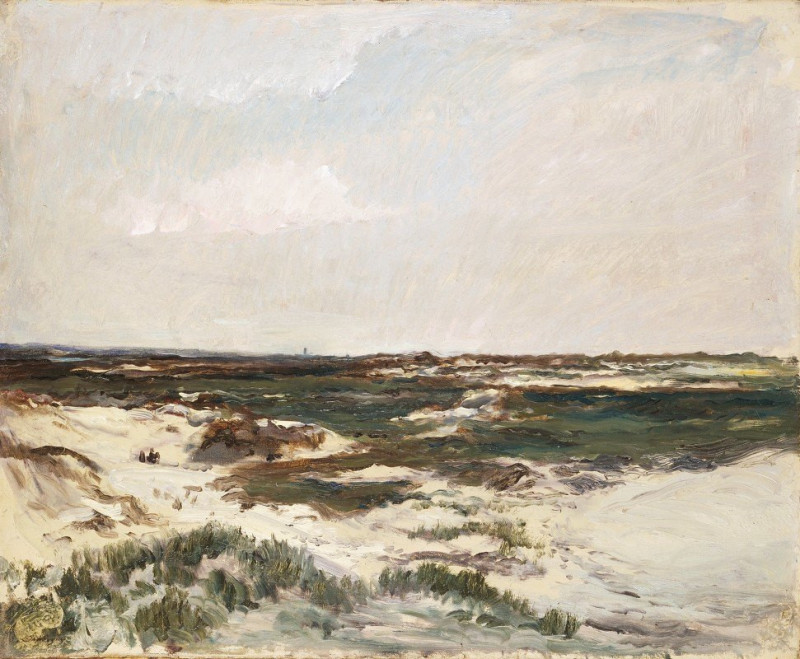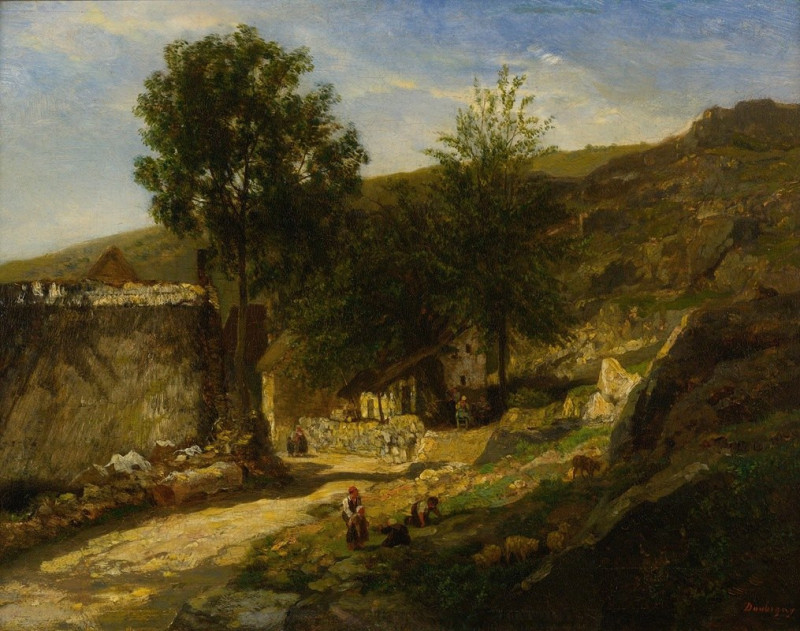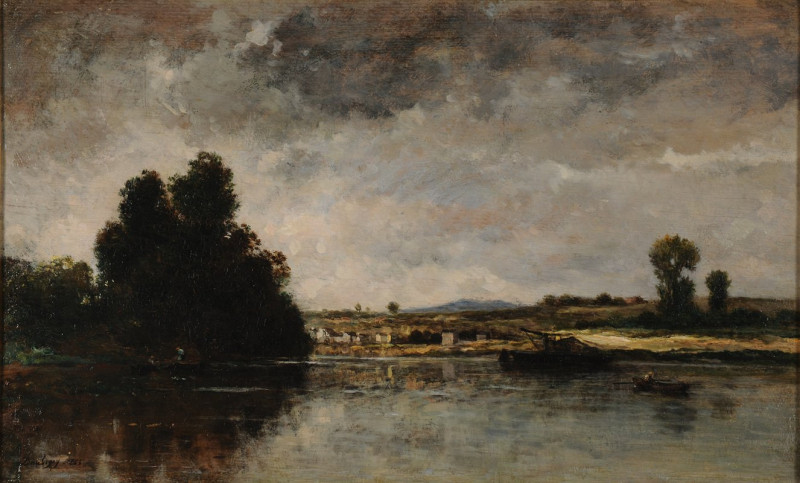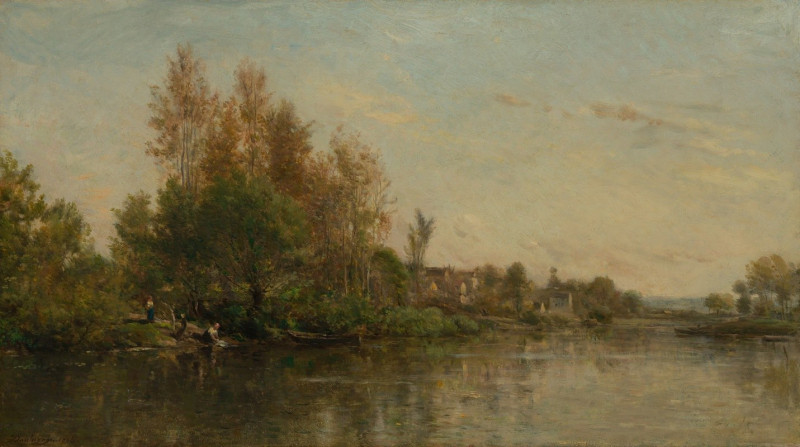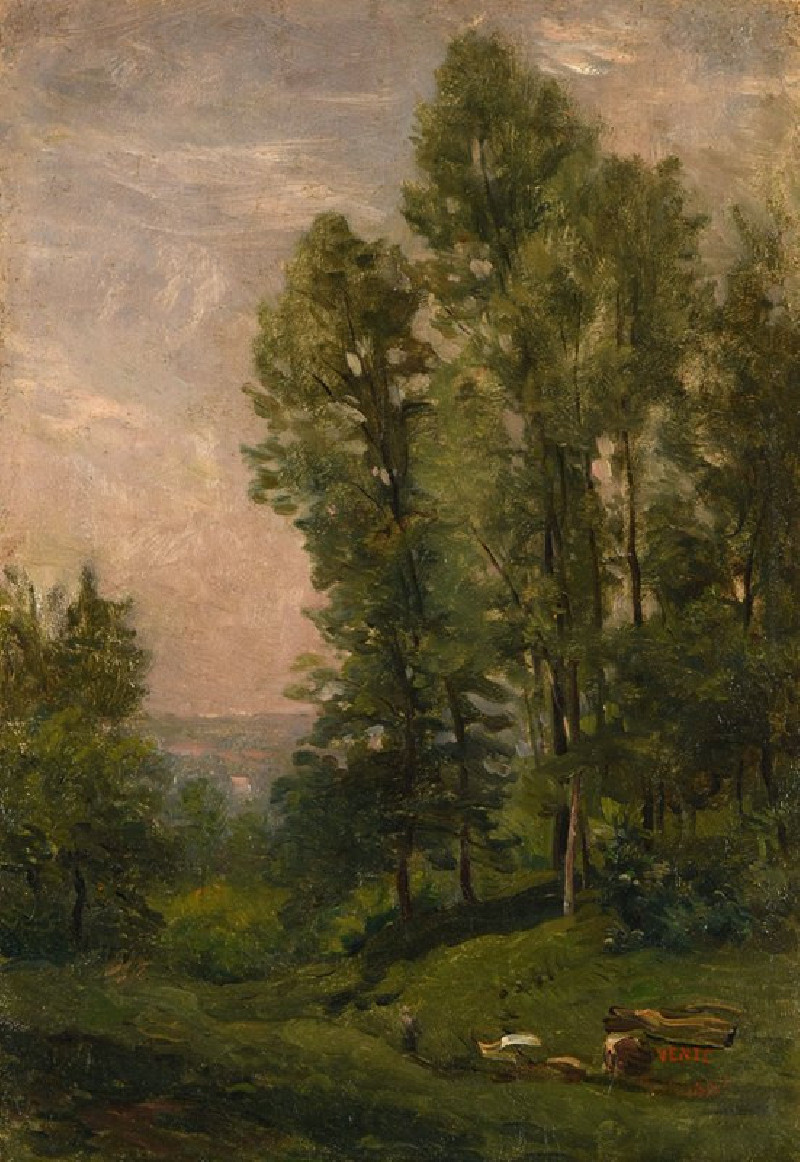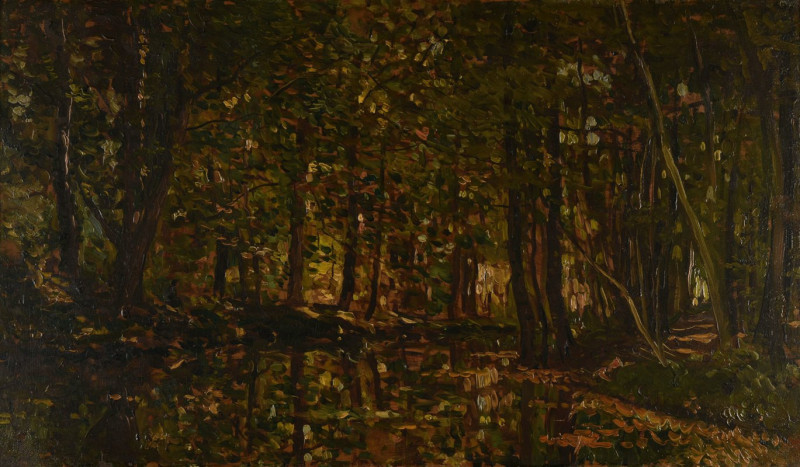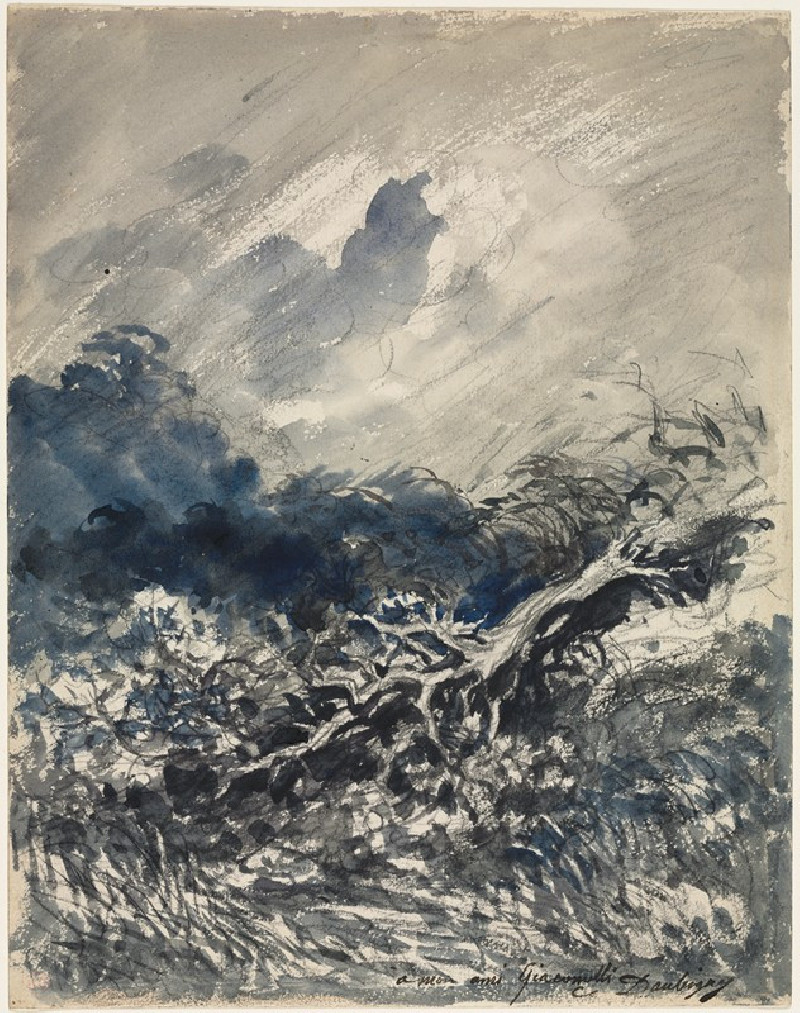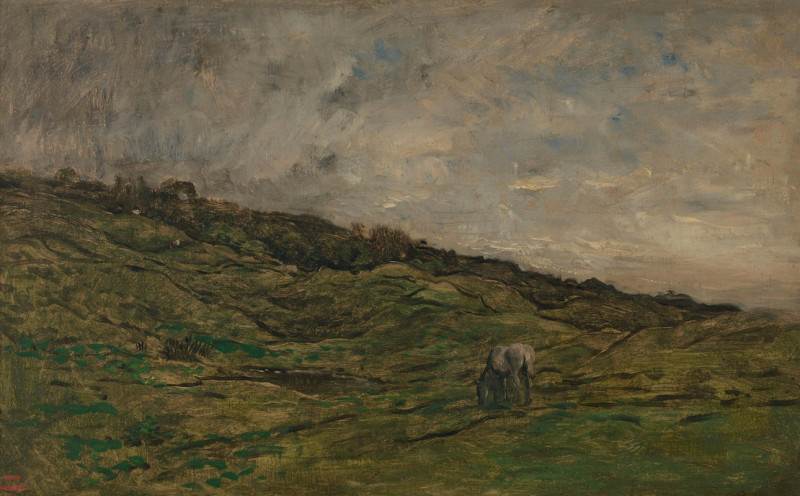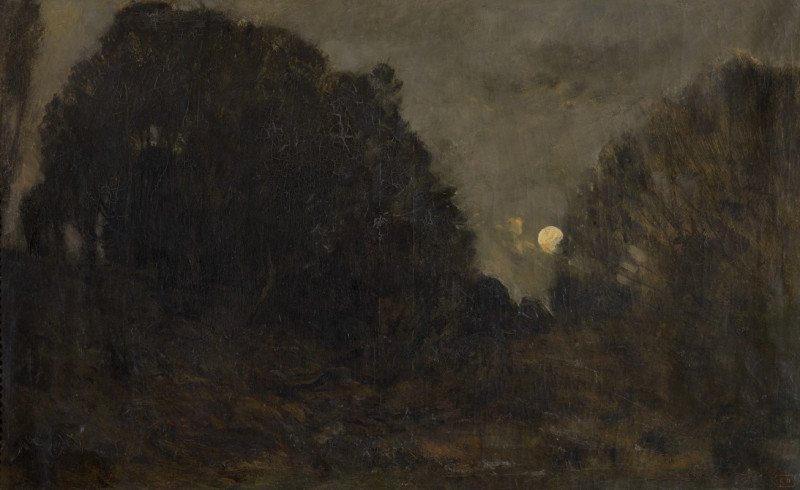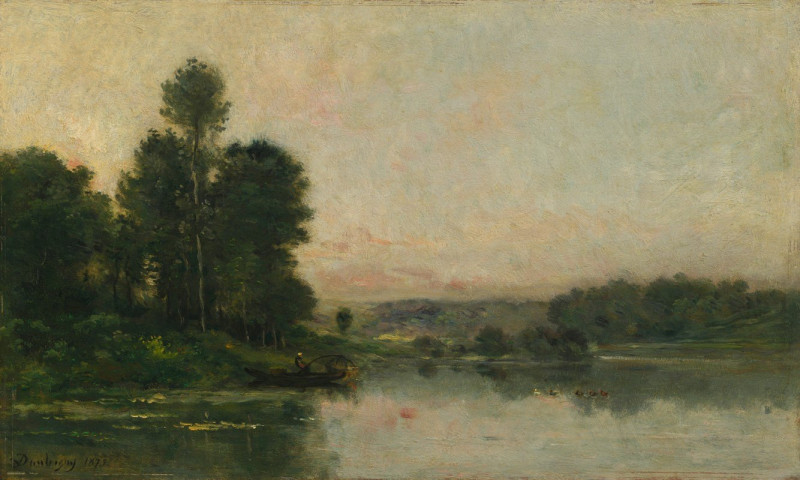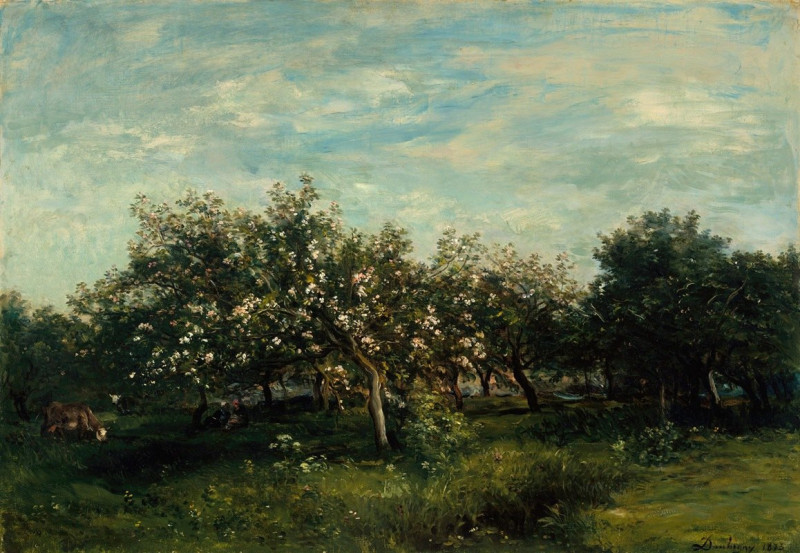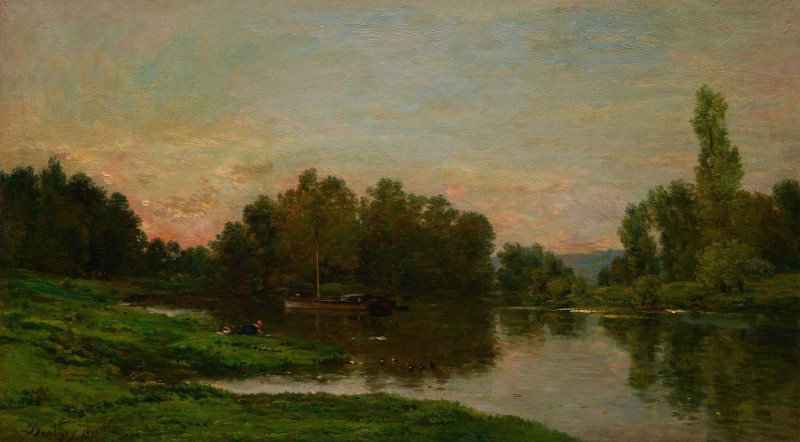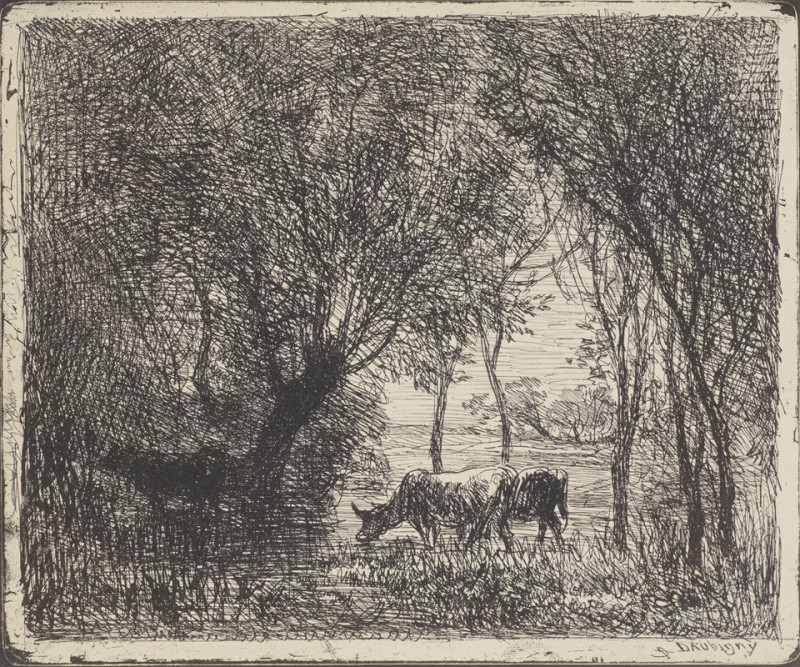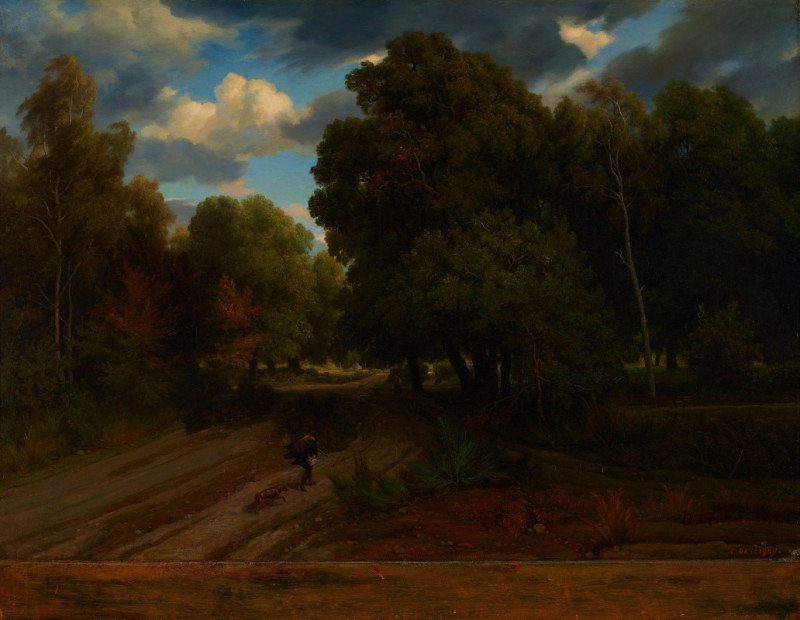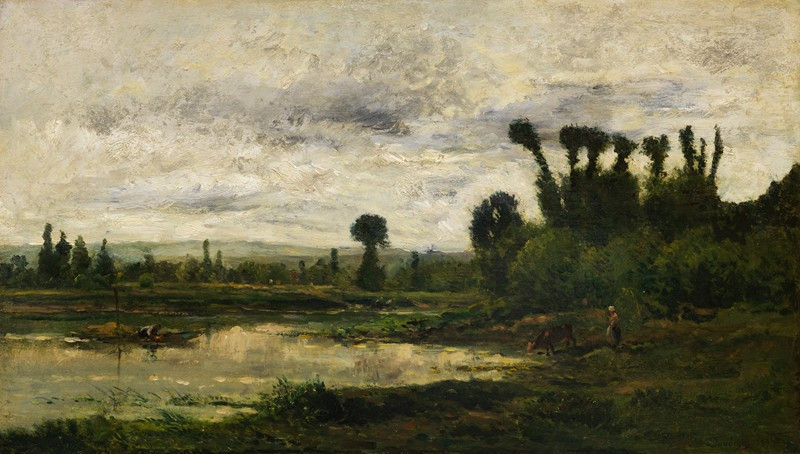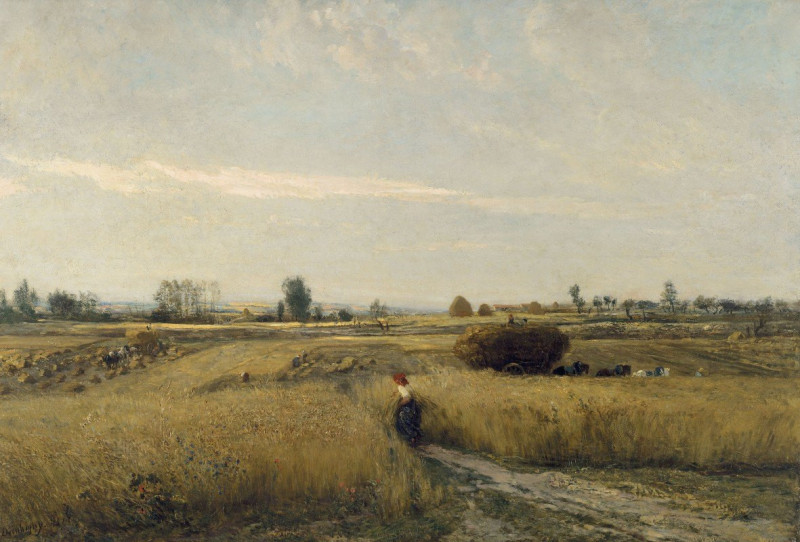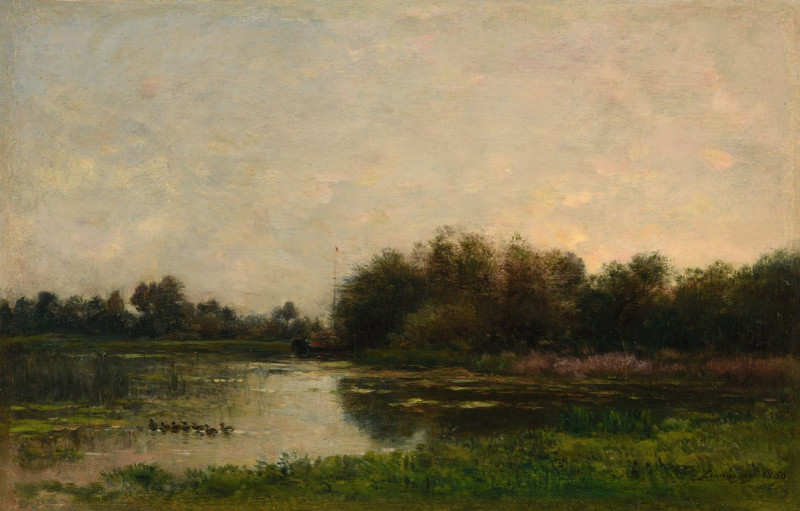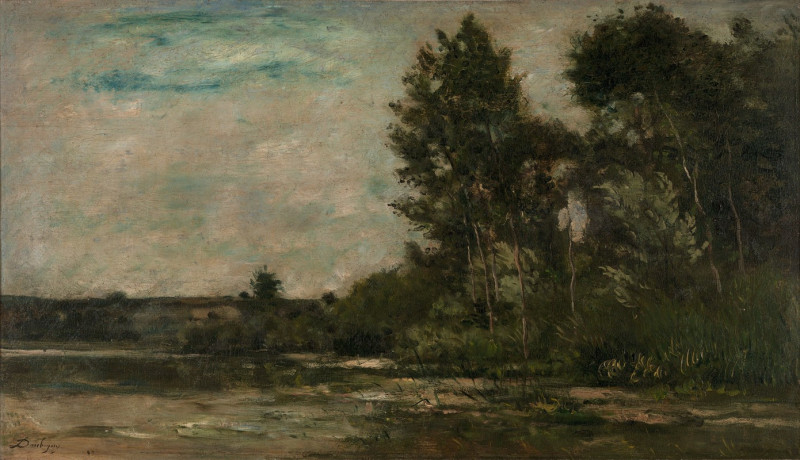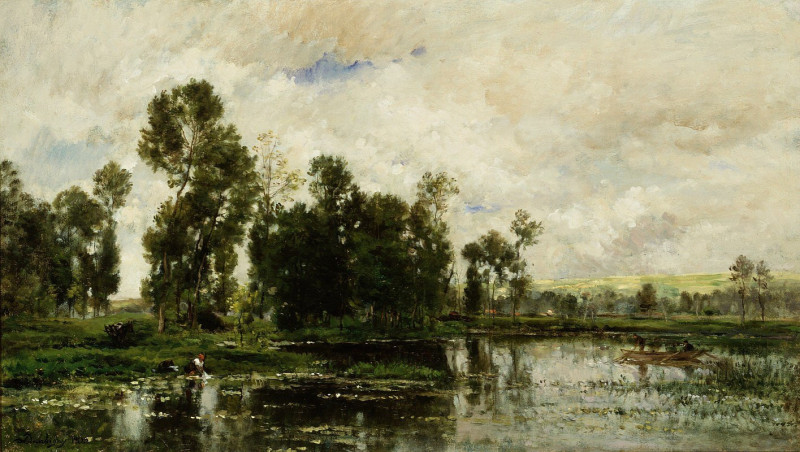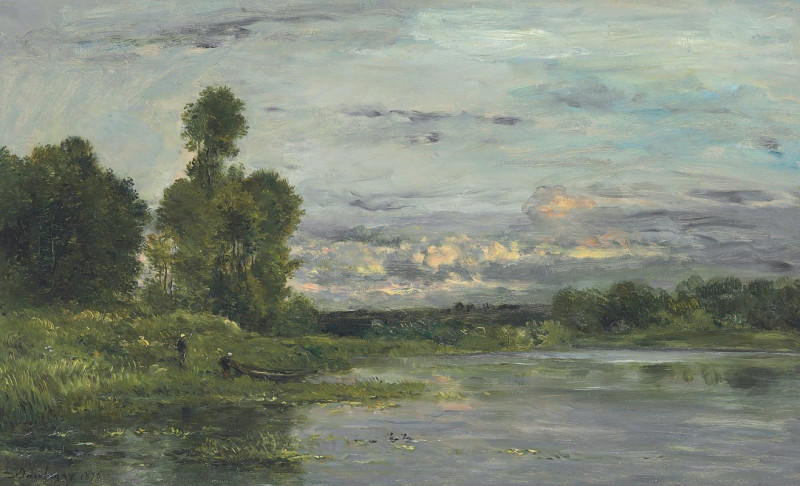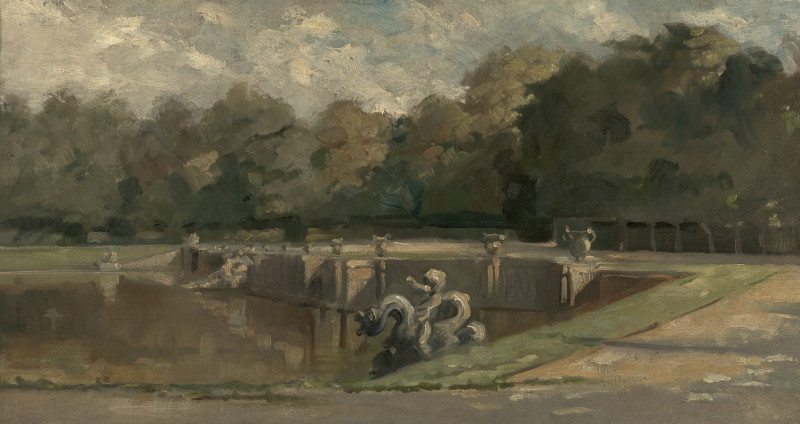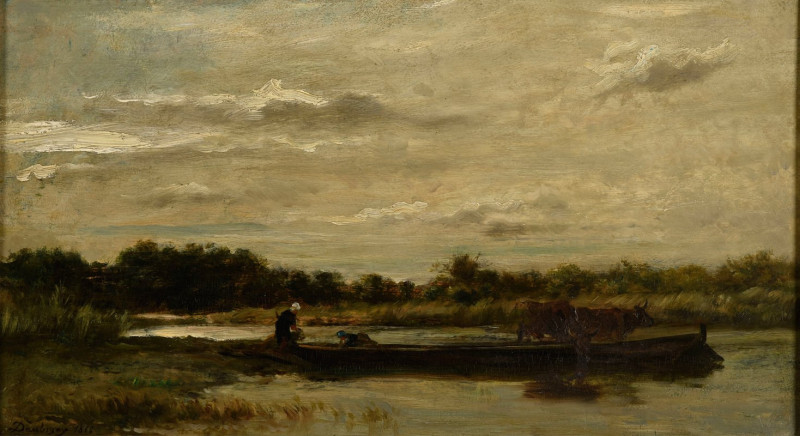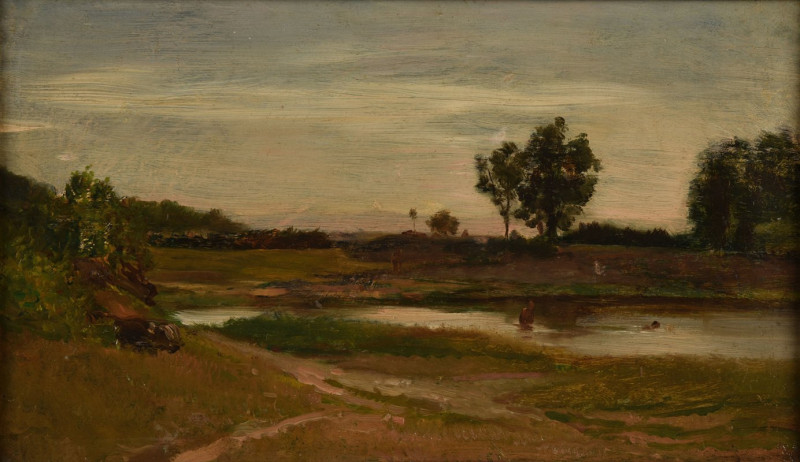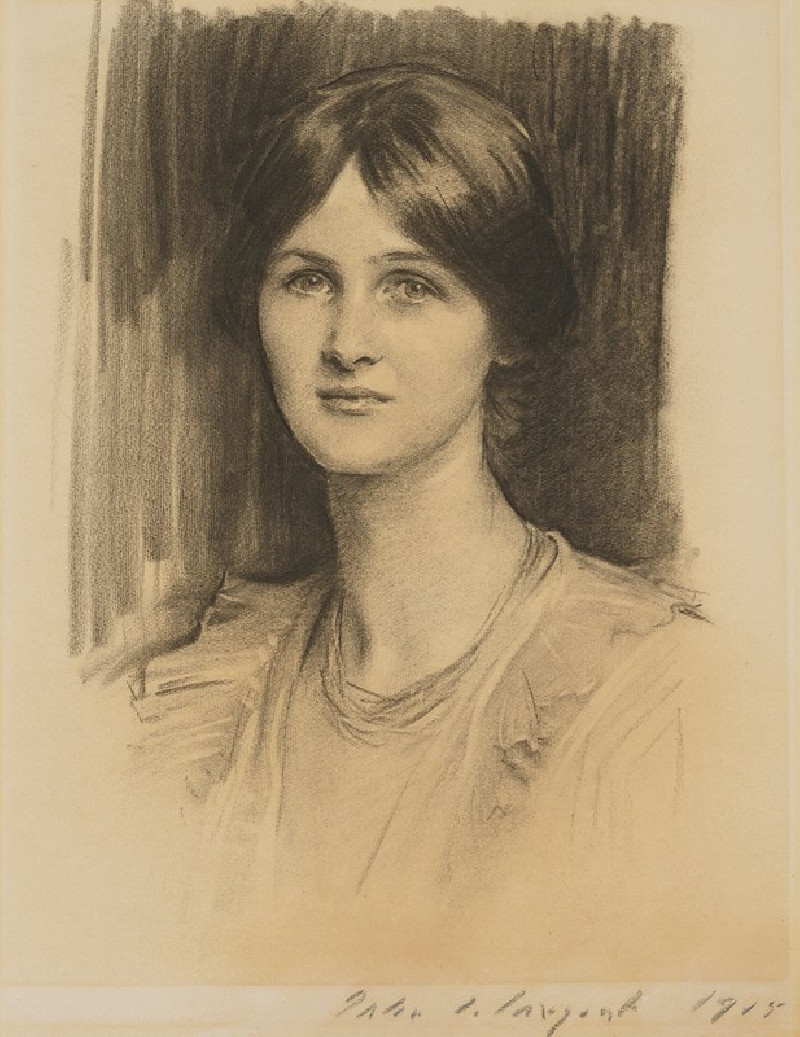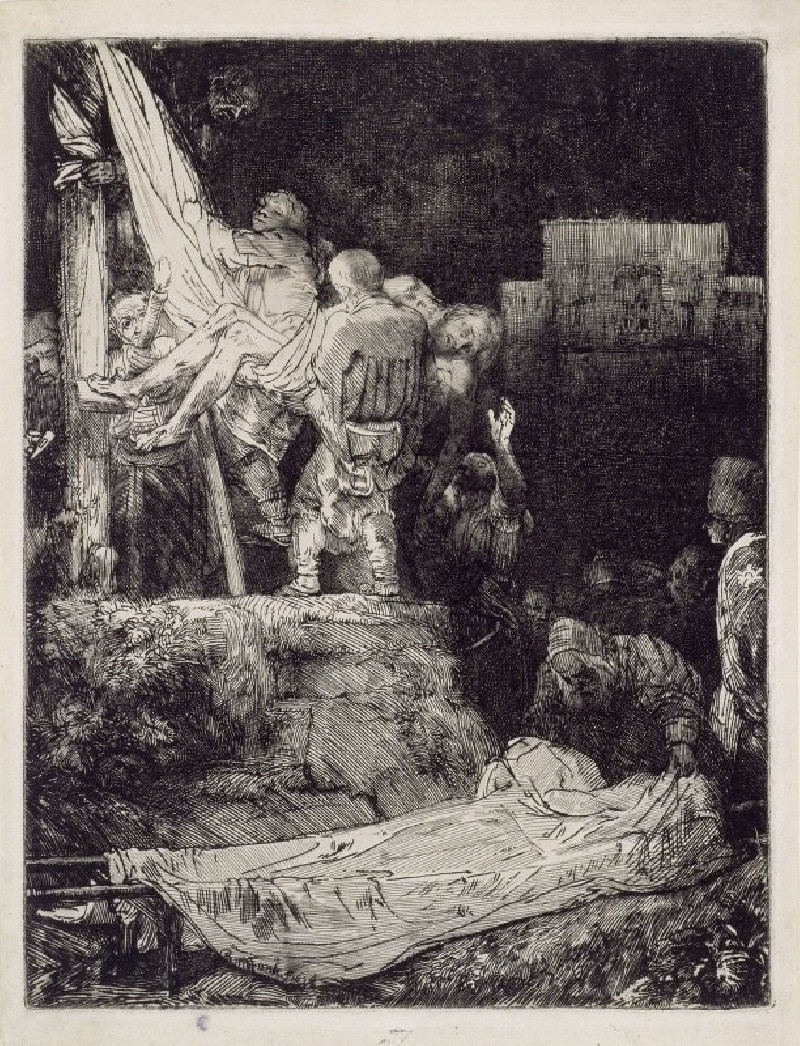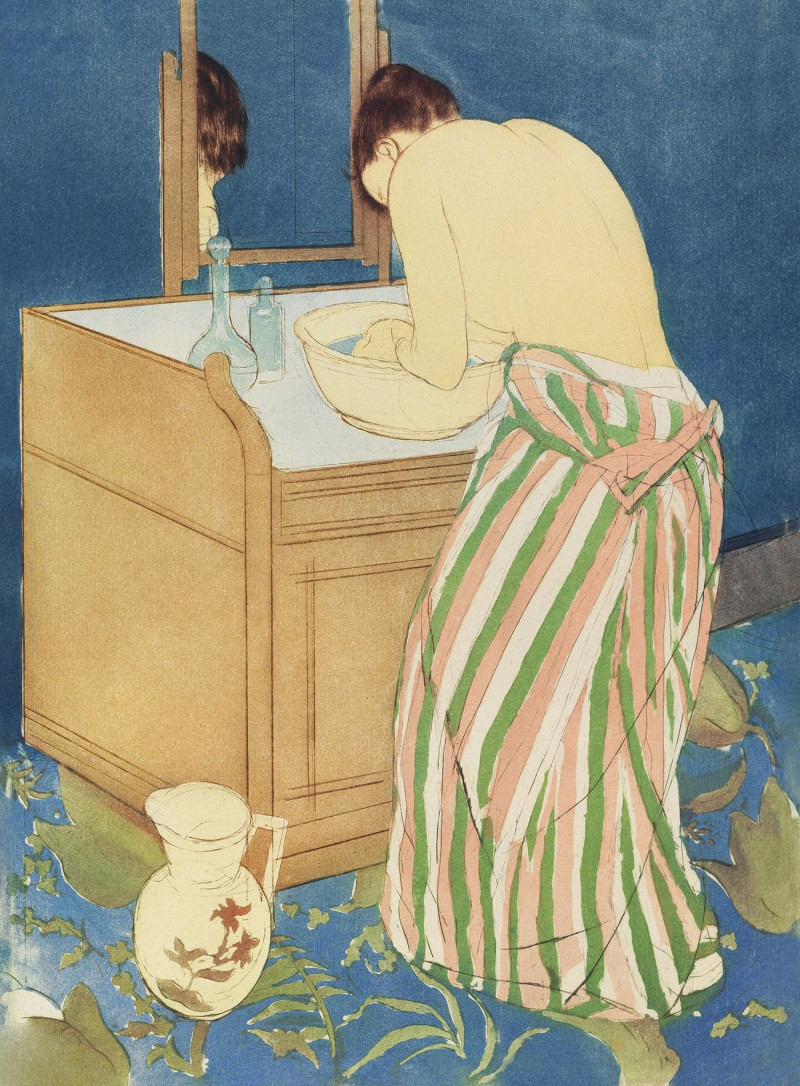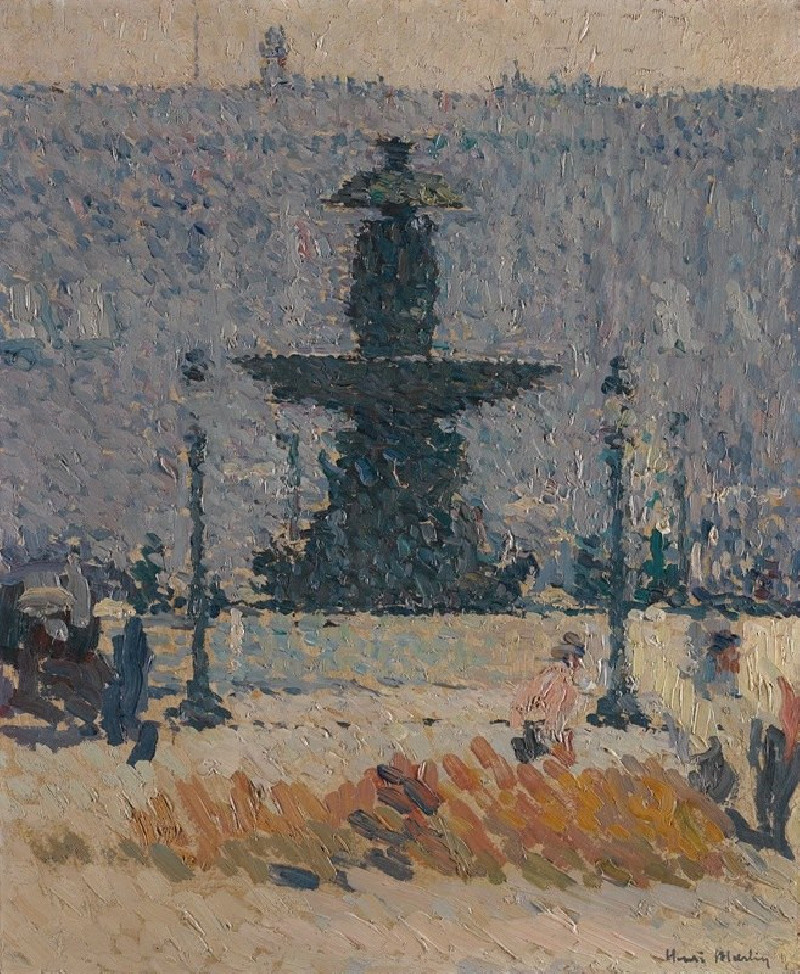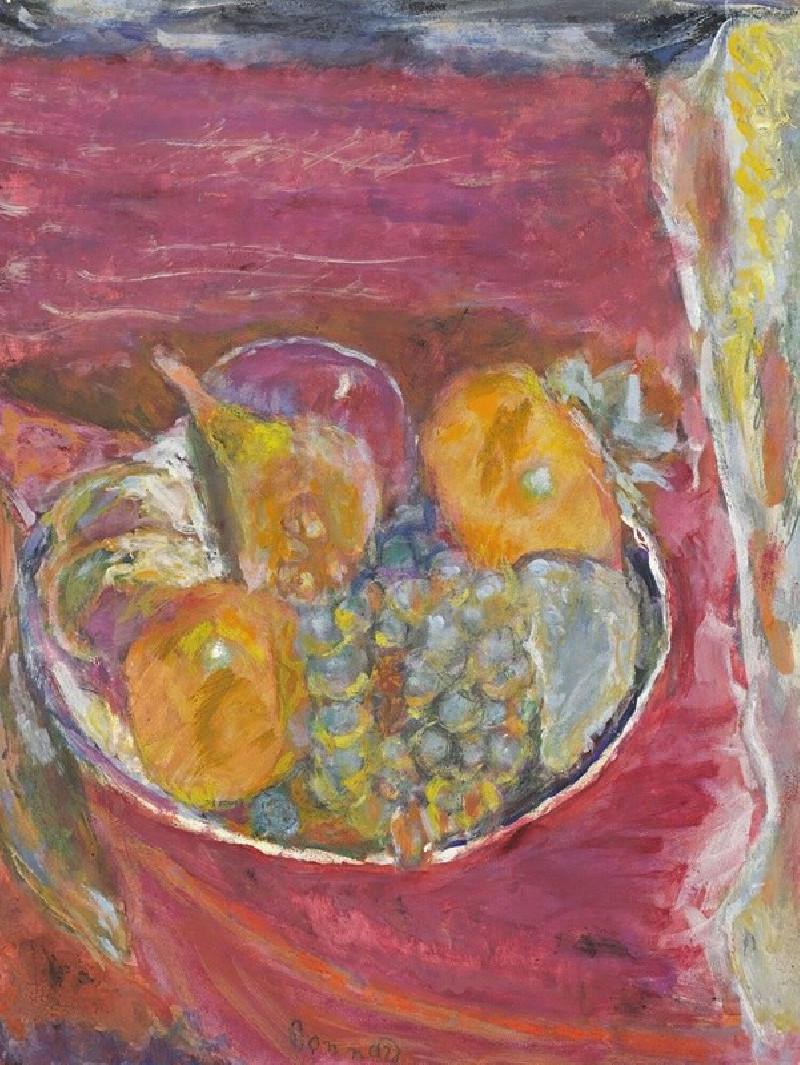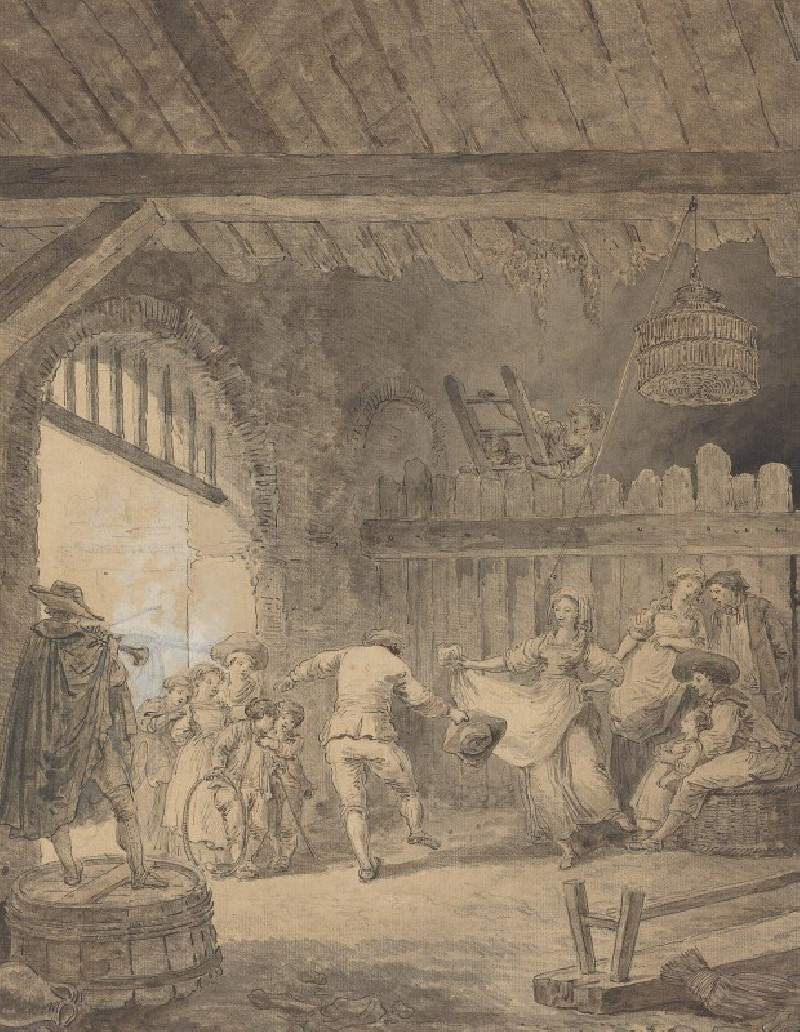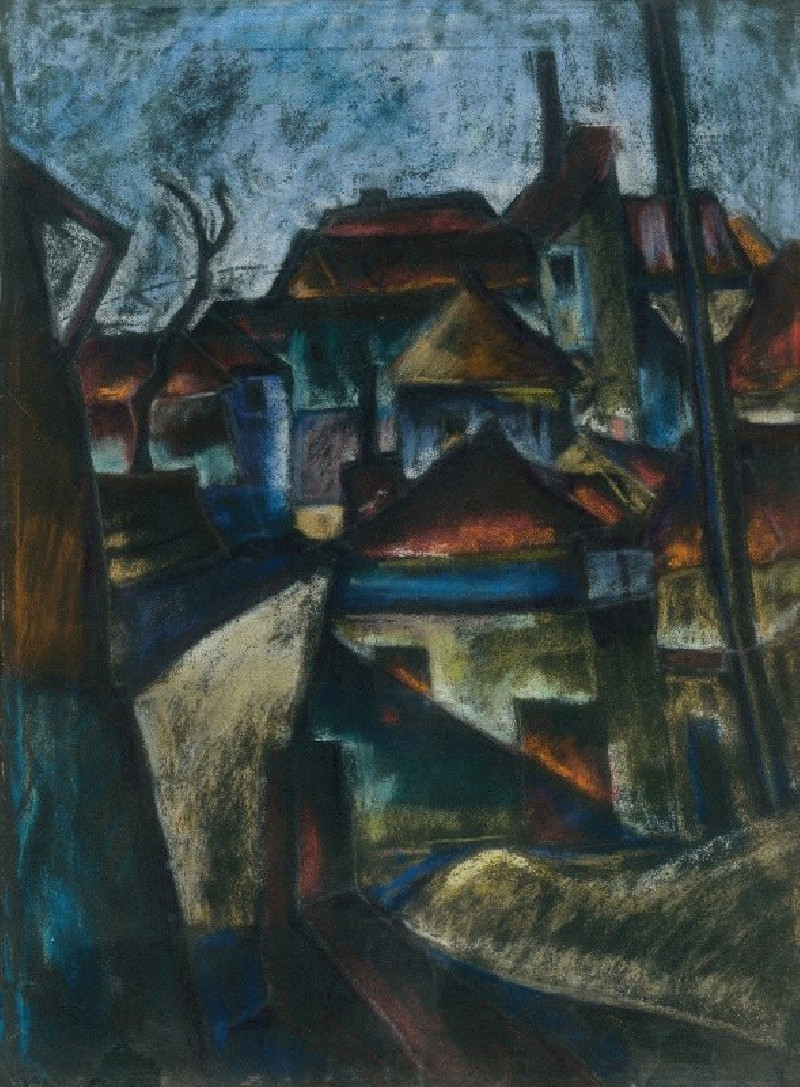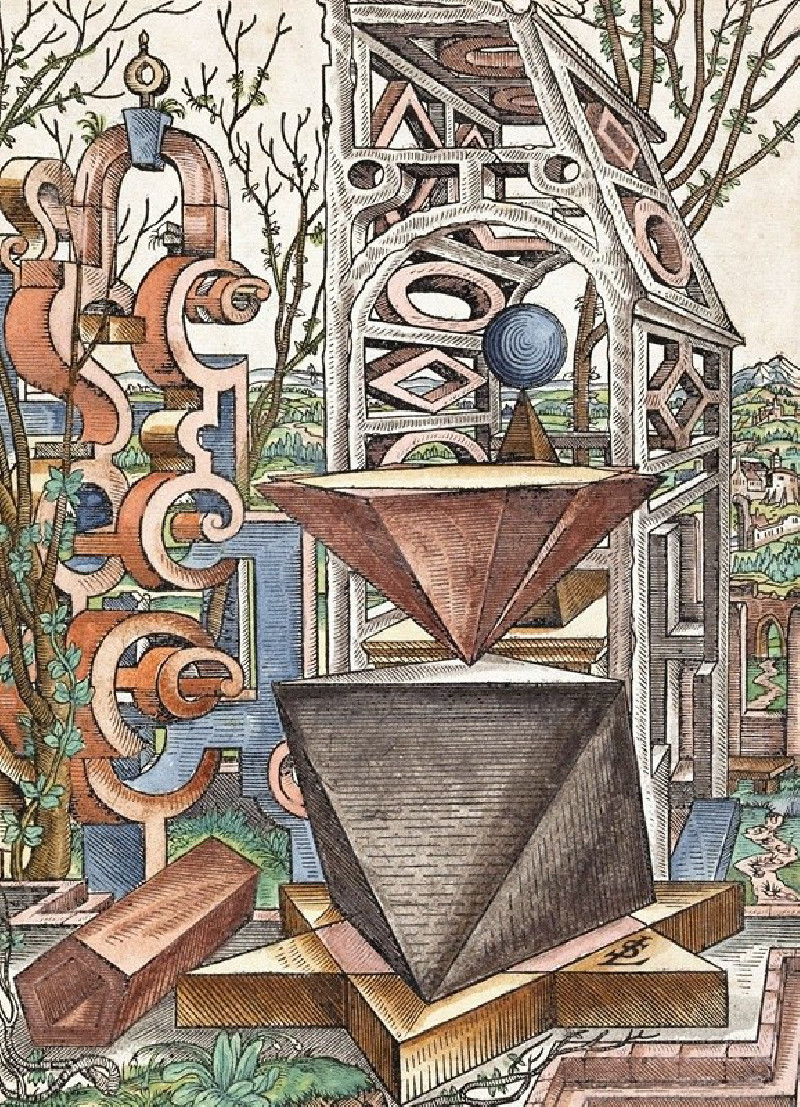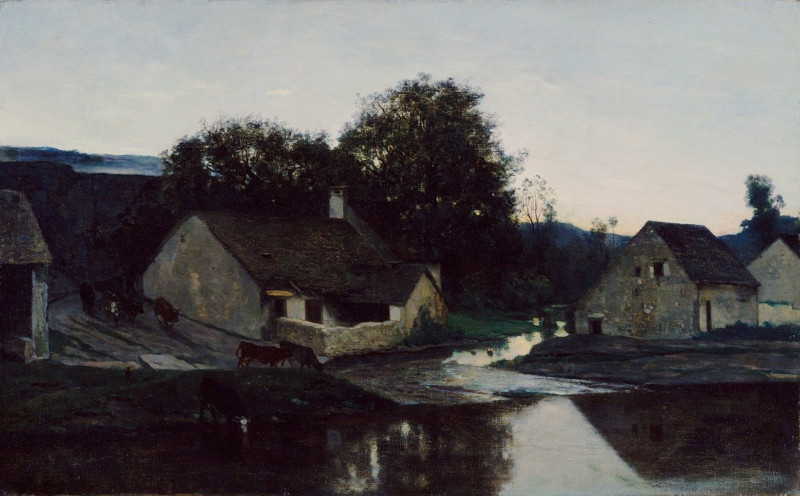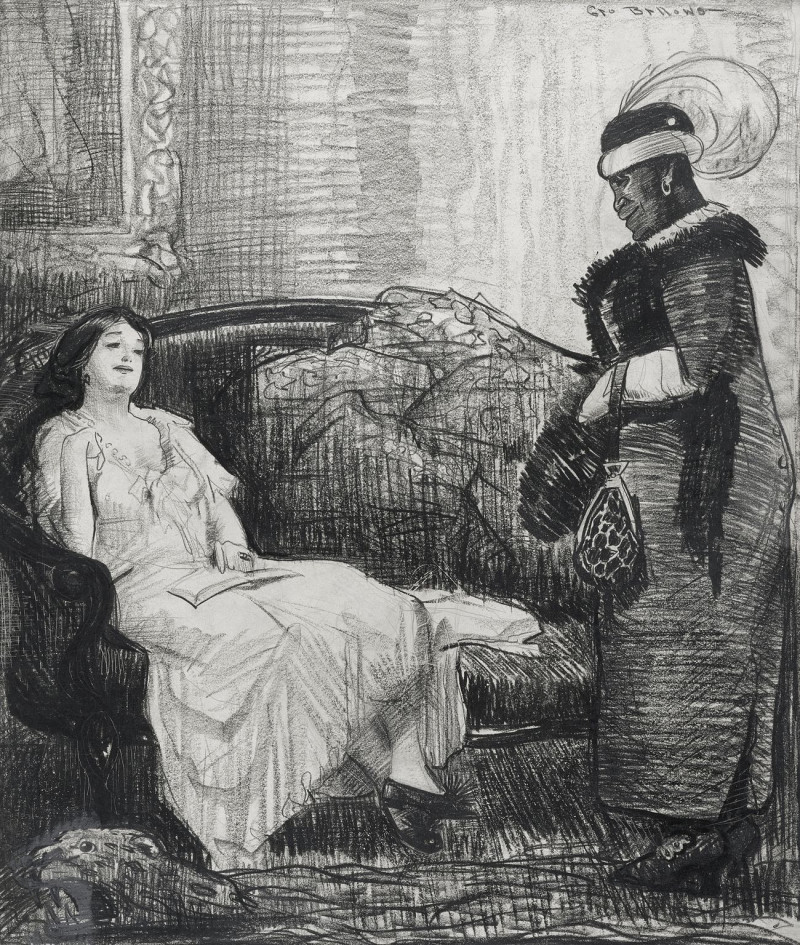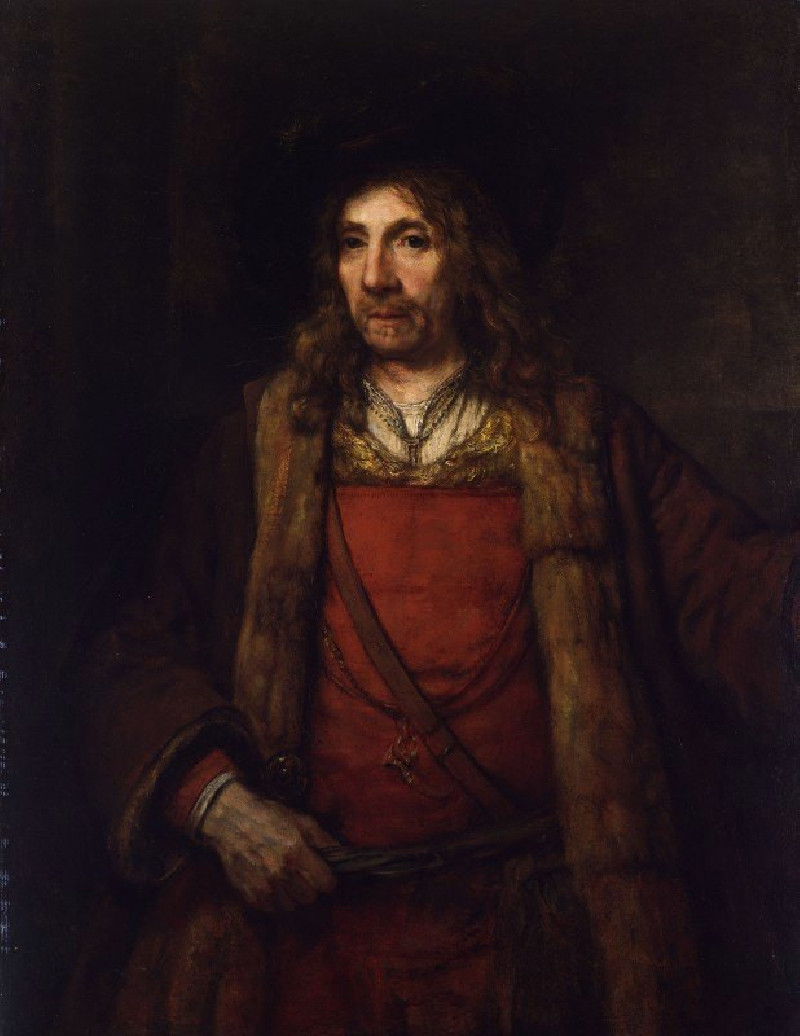Bords de l’Oise (ca 1860)
Technique: Giclée quality print
Recommended by our customers
More about this artwork
In the serene landscape of "Bords de l’Oise," painted around 1860 by the French artist Charles François Daubigny, we are transported to the gentle banks of the Oise River. This enchanting depiction shows a side of nature that is both peaceful and rich in vitality. The painting offers viewers a glimpse into a seemingly timeless rural setting, where nature dominates the scene.In the foreground, a few cattle leisurely graze and wade by the water, reflecting the day-to-day agricultural life that was typical in 19th-century France. Their calm demeanor mirrors the tranquil waters beside which they stand, and the lush greenery surrounding them. Across the river, a diversity of trees punctuates the landscape, their reflections shimmering in the smooth surface of the water, enhancing the sense of depth and tranquility.Above, the vast sky filled with soft, fluffy clouds possibly indicates the early hours of the day or a clearing storm, inviting contemplation about the cycles of nature. These clouds not only add a dramatic effect but also play with light and shadow, contributing to the overall mood of serene dynamism.Daubigny's brushwork is loose yet precise, capturing the essence of the natural scenery with a palpable affection and detailed observation. The artist's signature, subtly placed in the lower left corner, is a humble nod to his presence within the landscape, witnessing and immortalizing the quiet beauty of the Oise riverbanks."Bords de l’Oise" is a testament to Daubigny’s pivotal role in the Barbizon School, which emphasized painting en plein air (outdoors).
Delivery
Returns
Charles-François Daubigny (15 February 1817 – 19 February 1878) was a French painter, one of the members of the Barbizon school, and is considered an important precursor of impressionism.
He was also a prolific printmaker, mostly in etching but also as one of the main artists to use the cliché verre technique.

